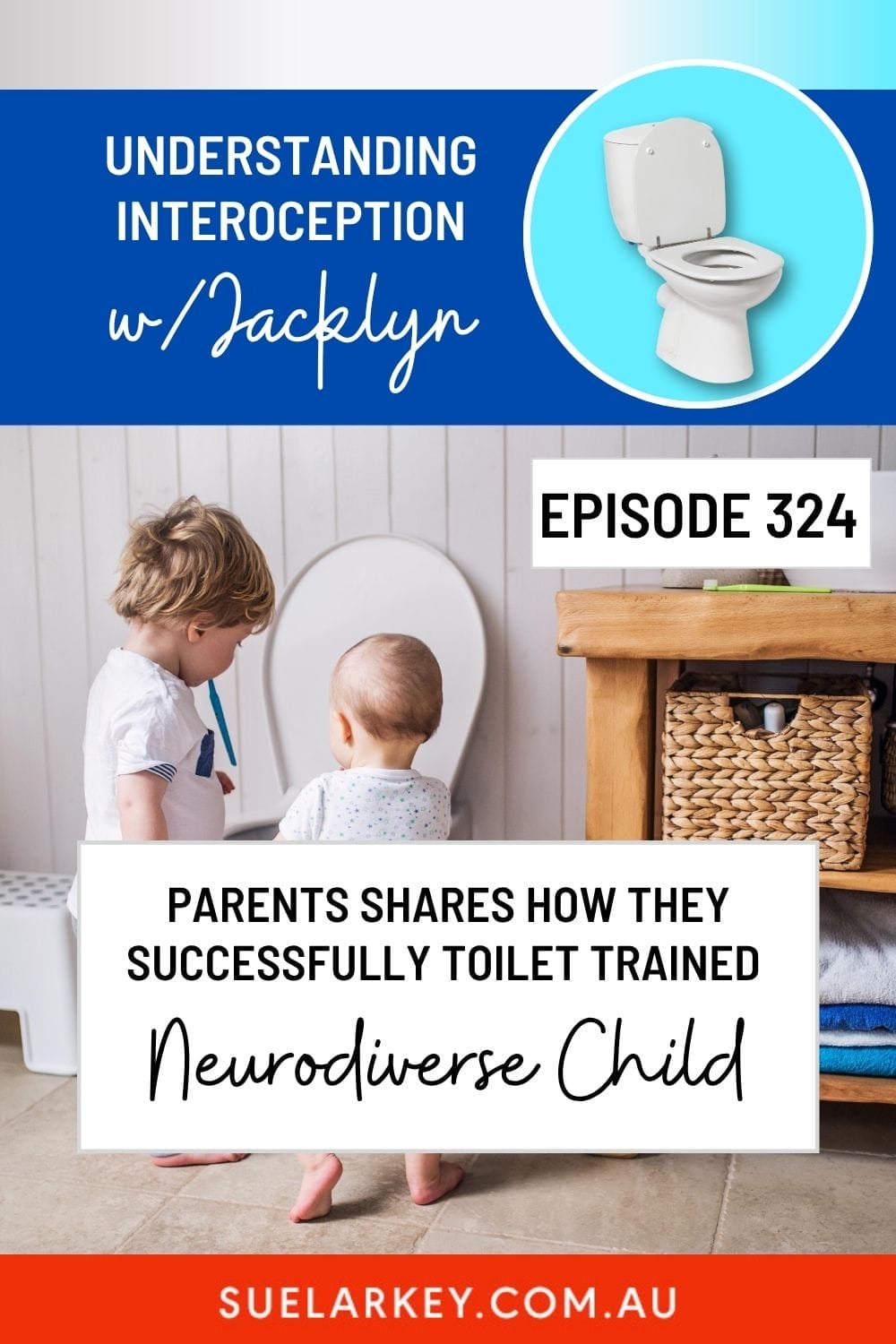Sue Larkey Blog
Helping you “Make a Difference”


Tips, Strategies, Time Savers and Inspiration to help make difference for a child with an ASD in your class, home or community.
Guest Author Kate Swenson shares Choosing Joy Over Fear: One Family’s Journey with Nonverbal Autism (Episode 326)
Conversations with Sue Larkey Guest Author Kate Swenson shares Choosing Joy Over Fear: One Family's Journey with Nonverbal Autism Non-verbal Autism Communication StrategiesKate Swenson’s popular blog “Finding Cooper’s Voice” has provided hundreds of thousands of parents of children with Autism hope and comfort. Kate has now written a powerful memoir “Forever Boy”, to continue sharing her inspiring story about motherhood and unconditional love. My Top takeaways from reading the book: ✅ Use Written Lists Instead of Pictures Kate found that Cooper didn't respond to PECS (picture exchange communication system), but thrived with written lists. She writes down activities ("we're gonna get dressed, we're gonna have breakfast, we're gonna brush teeth") and checks them off, providing comfort and predictability. ✅ Teach the "Tap on Shoulder" Technique Instead of allowing screaming, biting, or pinching to communicate, redirect students to tap on someone's shoulder or arm. This is a...
How to Navigate Difficult Conversations About Your Child’s Diagnosis with Family and Friends – With Parent Anna Tullemans (Episode 325)
How to Navigate Difficult Conversations About Your Child's Diagnosis with Family and Friends - With Parent Anna Tullemans Sharing Autism Diagnosis with Family Discussed in this Episode: ✅ Assess What They Already Know: Before sharing diagnosis information, determine how much the person understands. Ask yourself: "Do they know there's no 'look' for autism?" This tells you their baseline knowledge and where to start. ✅ Tailor Detail Level to Relationship Closeness: With close family (like parents), provide specific, detailed information: "He needs this quiet time because he needs to be able to quiet himself before he can come and talk to you." With friends who already accept your child, keep it simpler: "Daniel is doing that because of his diagnosis, and his diagnosis means we need to explain things to him more intricately." ✅ Start with Positives First: Before discussing challenges, highlight strengths. Example: "Daniel might be really good at doing puzzles and he can do them...
Understanding Interoception: Why Neurodiverse Children Need a Different Approach For Toilet Training (Episode 324)
Understanding Interoception: Why Neurodiverse Children Need a Different Approach for toilet training Toilet Timing Neurodiverse Children 10 Top Tips From Jacklyn and Her Experience in Toilet Training Creating a special box of bathroom activities 2. Using favourite shows (like Paddington) exclusively for toilet time Tracking progress with ticks and crosses on paper Offering specific rewards (5 M&Ms for wees, Kit Kats for poos) Taking nappies to the toilet to flush contents Starting with morning toilet routines Using special absorbent training pants for outings Maintaining consistency despite setbacks Allowing natural consequences for learning body signals Recognising and adapting to regression during transitions Recommended CoursesEarly Childhood BundleOn Sale!Developing Early Childhood Approaches for Children with Additional NeedsRecommended PodcastsEPISODE 305: A Guide to Toilet Training Neurodiverse Children Including Stool Withholding and Toilet Avoidance with Guest...
Understanding and Teaching AuDHD, PDA, ODD and RSD – Insights from Expert Laura Kerbey (Episode 323)
Everything you need to know about PDA - Insights & Tips from Educator Neurodiverse Student Support TechniquesIn this episode, I've taken excerpts from my previous interviews with Laura Kerbey:✅ Shift Your Mindset About "Difficult" Students - Recognize that PDA students aren't oppositional - they're anxious. As Laura confessed, "there was nothing wrong with these children. It was the environment and it was me." ✅ Give Students Autonomy Over Tasks - Provide choices and control to students with PDA, as demonstrated with the student who needed autonomy and dramatically improved once staff understood this need. ✅ Recognize "Can't" vs "Won't" - Understand that PDA students often WANT to do tasks but CAN'T due to anxiety, unlike ODD students who WON'T do tasks due to authority issues. ✅ Read Specialist Books Before Students Arrive - Prepare for incoming students by studying resources over summer break, as recommended in the podcast for teachers getting PDA or ADHD students next year....
Give the Gift of Understanding: Holiday Activities That Build Understanding of Neurodiversity (Episode 322)
Celebrating Diversity in The Classroom With The Gift of Understanding autism classroom inclusion strategiesDiscussed in this Episode: ✅ "We May All Be Different Fish" Display: Have every child make a fish and decorate it with their holiday traditions, foods, music, stories, religious activities, and celebration dates. Display with the phrase "We may all be different fish, but in this school we swim together." (see example below!) ✅ Holiday Calendar Activity: Print out calendars for December, January, and February. Have students mark important dates for their families (Christmas Eve, Epiphany, Chinese New Year, etc.) and learn about different cultural celebrations and their significance. ✅ Taking the Classroom Outside: For students with sensory overwhelm who need to sit outside, bring the other children to that child rather than forcing them into the classroom -a creative approach to true inclusion. ✅ Photographer Role Assignment: Give students who find concerts overwhelming a...
Using the Red Beast Books to Regulate Emotions (Episode 321)
Using the Red Beasts to Help Recognise and Regulate Emotions Free Downloadable Activities Emotional Regulation for Neurodiverse StudentsManaging Children's Anger and Developing Emotional LiteracyUnderstanding Children's Anger Check out some great free activities to use with children below. Anger can manifest in different ways for children. Some children may react aggressively or shut down when angry. It's important to educate children on managing their own anger. Children need emotional regulation skills to fully engage and participate positively in the classroom. Recognizing Your Own Emotions Adults need to tune into their own emotions and share these openly with children. This modeling helps children understand emotions and that it's normal to experience anger, anxiety, and more. Take time to write down your own emotions throughout the day to build self-awareness. Sharing Emotions with Children Verbally share your emotions with children to normalize feelings for them. Explain...
Essential Cheat Sheets for Supporting Students moving between Year Levels (Episode 320)
Essential Cheat Sheets for Supporting Students moving between Year Levels Student Transition Cheat Sheets Transitioning children with neurodiversity successfully is an important part of a child's education. Transitioning children with neurodiversity successfully is an important part of a child's education. With the right strategies for teachers and parents, children can transition from one school to another, or from preschool to school, with ease. Parents, teachers, and aides can work together to create a successful transition plan, using transition cheat sheets, self advocacy, and calming strategies. Knowing 10 things about the child, as well as any sensory issues, can help teachers create a supportive environment for the child. Here are five tips for teachers to help children transition successfully: 1. Create a transition plan with the help of parents, teachers, and aides - I’ve created one for you (see below)2. Print and Distribute to All Stakeholders: Print out the...
Preparing Neurodiverse students for 2026 – Free Ebook (Episode 319)
Preparing Neurodiverse students for 2026 Sue Discusses Free Ebook with strategies for all ages and stage neurodiverse student transition tipsDiscussed in this Episode: ✅ Video the school environment - Use a phone or iPad to record the teacher saying hello, the office staff, locker areas, drop-off zones, and school spaces WITH students present (not empty) so children can see and hear the actual environment they'll experience. ✅ Create a visual school map - Develop a physical map showing toilets, library, bag hanging areas, lockers, and equipment schedule (e.g., "allowed on equipment Monday, Wednesday, Thursday") for visual learners to process information. ✅ Practice lunchbox opening NOW - Purchase the lunchbox before December (better selection in November), and have children practice unzipping it and opening all containers including tiny teddies, chip packets, and drink bottles. ✅ Keep the same teacher assistant for continuity - In schools with high staff turnover where teacher...
Understanding AuDHD Girls: Camouflage /Masking, Burnout and Perfectionism with Guest Jane McFadden (Episode 318)
Understanding AuDHD Girls: Camouflage /Masking, Burnout and Perfectionism with Guest Jane McFadden ASD and ADHD Masking For Girls Jane McFadden is a former psychologist turned Neuroscientist, Author, and Neurodiversity Specialist. Jane has both lived experience and clinical expertise. After years of battling burnout, stress, and anxiety, she received a life-altering ADHD diagnosis in 2022, which answered many of her questions and ignited her passion to help other women and girls avoid being misdiagnosed and wrongly medicated. While ADHD medication was life-changing, it also unveiled Autistic traits, leading to her being diagnosed as Autistic in 2024. So I am thrilled to have Jane join us to share her knowledge & expertise on identifying camouflaged or internalising Autistic children. Discussed in this Episode: ✅ Eliminate captain's pick in PE - Post team assignments on a whiteboard before class to reduce social anxiety for all students, not just those with diagnoses....
What is AuDHD & RSD? With Expert Laura Kerbey (Episode 317)
What is AuDHD & RSD? With Expert Laura Kerbey AuDHD Classroom Strategies Teachers Discussed in this Podcast: ✅ Two-student demonstration technique: Have two children demonstrate tasks first (getting books, lining up) before asking the AuDHD student - provides visual guidance without direct demands. ✅ Flexible scheduling approach: Recognize AuDHD students need structure some days and spontaneity others - check in daily about their needs rather than rigid expectations. ✅ "Take the thought to court" strategy: When students experience RSD, ask "Where is the evidence?" to challenge negative assumptions about others' thoughts. ✅ Alternative perspective questioning: Ask "What else could the teacher have been thinking?" or "Who else could they have been looking at?" to combat RSD interpretations. ✅ Parent collaboration on expectations: Meet with parents at year's start to set realistic grade expectations (60% English, 80% History) to reduce perfectionism pressure. ✅...
Create Your Classroom Calm Corner: What actually Works When Setting Up Effective Break Spaces (Episode 316)
Create Your Classroom Calm Corner: What actually Works When Setting Up Effective Break Spaces Sensory Break Space Strategies ************************************** Join me for an upcoming Workshop: Sue Larkey Workshops Can't make these Workshop dates? Join me for a self-paced on-demand course: Sue Larkey On-Demand Workshops ************************************** This Weeks Podcast was Created after a Question from Trish: "I am currently in the middle of setting up a calm corner/area within my senior preschool room (4-5years) my kids understand that this area is to be used when they are feeling overwhelmed or just need a little break away. Would love for ideas on what I can add to this area" Discussed in this Podcast: ✅ The "Walk Don't Talk" strategy: Take dysregulated students for a fast-paced walk without asking questions or talking, allowing them to regulate without verbal pressure during survival mode. ✅ Token system for breaks: Give students physical tokens they can...
Practical Strategies for Executive Functioning Skills: Dean Beadle Shares his Lived Experience (Episode 315)
Practical Strategies for Executive Functioning Skills: Dean Beadle shares his Lived Experience Autistic Inertia Teaching Methods Strategies for Executive FunctioningKey takeaways from this podcast for educators and parents to understand Executive Functioning: ✅ Executive Functioning - "The Brain's Admin Team" it includes planning, organization, emotional regulation, pre-task preparation and management. ✅ Understanding Autistic Inertia. It includes difficulty shifting between tasks (start/stop). ✅ Understanding Autistic Inertia is not laziness or task avoidance. Learn more from Couse: Educators Guide to Executive Functioning. ✅"Autism plus environment equals outcome" and what you can to do to make environment more supportive (see Top Tips below) ✅ Focus on supporting rather than changing. Educators Guide to Executive Functioning include Exclusive Ebook with 100s of Accomodations & Adjustments to try. Enroll Now ✅ ”What's perfectly doable tomorrow, may be nigh on...











